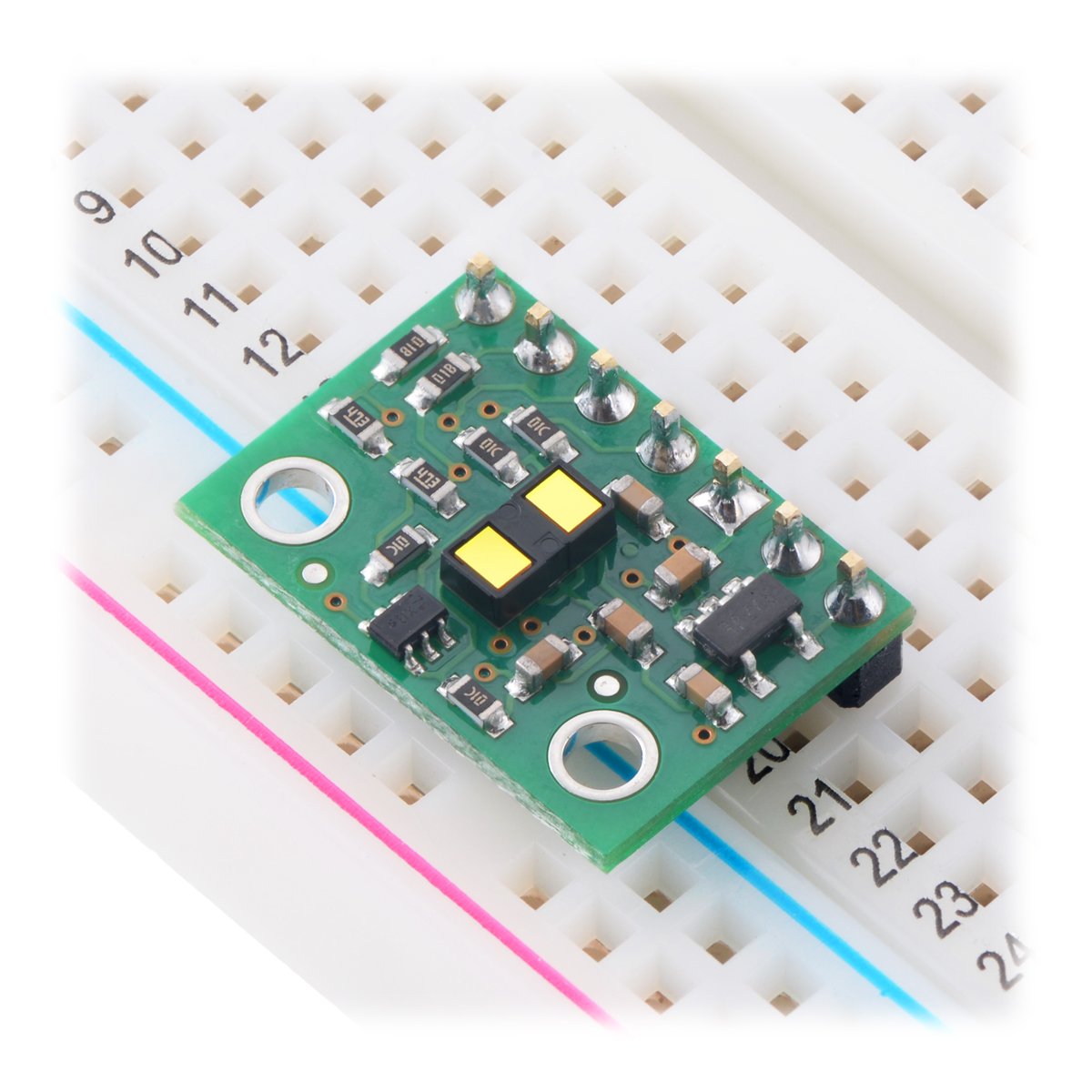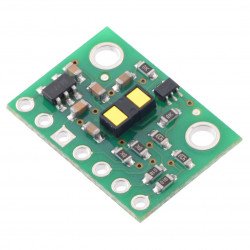Description
Digital sensor, connecting the proximity measurement and the ability to measure the intensity of ambient light. Working range is up to 400 cm with a resolution of 1 mm. It is powered with the voltage from 2.6 to 5.5 V, it has a built-in voltage regulator, it communicates via the I2C bus.
Method time-of-flight is to measure the time from emitting the pulse from an infrared laser up to its return to the detector. It does not depend on the reflection of light from the object.
The module has necessary for the correct operation of the system, passive elements. Pins are the popular goldpin connectors, for connecting the sensor via wires or to directly attach to the breadboard. Connectors are included in the set for self-soldering.
Specification
- Supply voltage: 2.6 V to 5.5 V
- Current consumption: 15 mA
- Measuring range: from 4 to 400 cm
- Resolution: 1 mm
- Interface: I2C (TWI)
- Board sizes: 13 x 18 x 2 mm
- Weight: 0.5 g
- The set also includes a goldpin strap
|
The product is compatible with Arduino Library to connect to the Arduino can be found atthis address. |
Communication
The sensor has seven pins for self-assembly of connectors of goldpin type - pitch of 2.54 mm (included in the set).
| Name |
Description |
|---|---|
| VDD | Regulated output voltage of 2.8 V. |
| VIN |
The module's supply voltage is from 2.7 V to 5.5 V. The SDA and SCL lines are pulled up to this level with resistors. |
| GND | The ground of the system. |
| SDA |
I2C data line. Low status is 0 V and high status equals to the VIN pin. |
| SCL |
I2C clock line. Low status is 0 V and high status equals to VIN pin. |
| XSHUT |
The pin disabling the module is activated by the low status. By default, it is pulled up to VDD. The low status switches the sensor to standby mode. Details are inthe documentation. |
| GPIO1 | Programmable interrupt's output. Details are inthe documentation. |
Useful links |
























































































































































































































































































































































